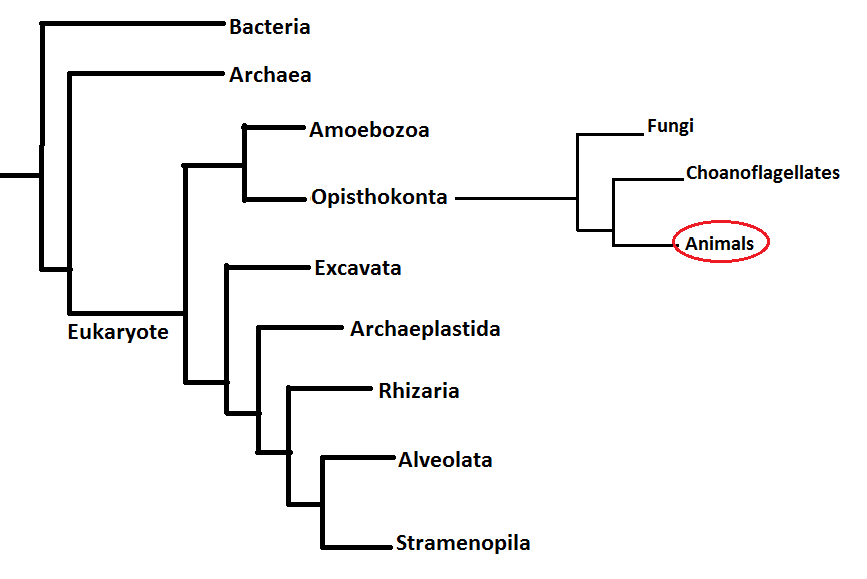Classification
Domain: Eukarya
Aleochara bilineata belongs to the kingdom Eukarya because it is
a multicellular organism, and its cells contain a nucleus and
membrane-bound organelles. The domain Eukaryote makes up one of
the three domains of life. The other domains are Bacteria and
Achaea. Check out and compare other organisms from the Eukarya
domain, which includes everything from
fungi, to
plants, to
animals.
Kingdom: Animalia
A. bilineata belongs to the kingdom Animalia because they are
heterotrophic animals, lack cell walls, and they are motile at
some point of their life cycle. Also, most Animalia organisms
contain muscles and have specialized tissues. There is a variety
of species that fall under this kingdom, ranging from slithering
snakes to cuddly
otters.
Phylum: Arthropoda
A. bilineata belong to the phylum Arthropoda because they have a
segmented exoskeleton, jointed appendages, and are bilaterally
symmetrical. The segmented bodies of the arthropods contain
three regions; head, thorax, and abdomen. Their exoskeletons are
made from a non-living material, chitin. Because chitin doesn’t
grow with the organism, they must undergo ecdysis (or “molting”)
which requires them to shed their chitinous exoskeleton upon the
formation of a new one (The Global Biodiversity Information
Facility 2013, John Meyer 2009). Some awesome (and might I add
creepy-crawly) examples of arthropods include;
dragonflies,
caterpillars, and
centipedes.
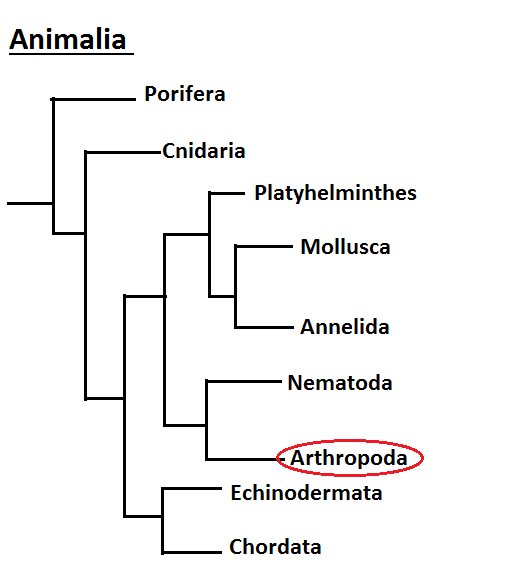
.jpg)
Class: Insecta
A. bilineata belong to the class Insecta. Insects can be
classified as three pairs of legs, a segmented body, compound
eyes, and one pair on antennae. Insects are the only know
invertebrates capable of flight. Insects are also known to be
the most diverse group of animals. They represent a large
portion of the Animalia kingdom (The Global Biodiversity
Information Facility 2013, John Meyer 2009). Check out this page
of another neat insect; the
ant!
Order: Coleoptera
A. bilineata belongs to the order Coleoptera, commonly called
beetles. Coleoptera is the largest order in the class Insecta.
Most beetles have two pairs of wings. The front pair, elytra,
are hard and thick, forming a sheath-like shield to protect the
bottom pair. At rest the elytra meet in the middle of the back,
which forms the distinct straight line most would recognize as
characteristic to beetles (The Global Biodiversity Information
Facility 2013, John Meyer 2009). Click here for another great
example of a
beetle in the Coleoptera order!
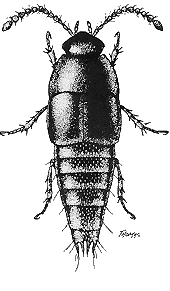
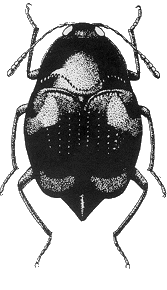
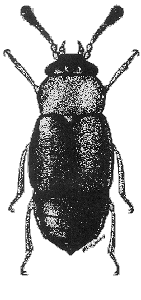
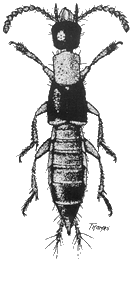
Family: Staphylinidae
A. bilineata belongs to the Staphylinidae family. This family is
characterized by its short elytra (hard wing coverings) which
exposes several abdominal sections. Staphylinidae are also known
to feed on decaying mammals. Their mandibles are sharp and long
and allow them to do so, as well as feed on insects and maggots
(John Meyer 2009).
Genus: Aleochara
A. bilineata belongs to the Aleochara genus.
Aleochara are known
to be the only parasites in the Staphylinidae family. They can
be found worldwide and consists of more than four-hundred
species. Within these environments, Aleochara are commonly found
in or near organic matter. This being said, little is known
about the phylogenetic relationships between the species within
the genus (The Global Biodiversity Information Facility 2013).
_(2).jpg)
Species: Aleochara bilineata
The Aleochara bilineata species is characterized by its ability
to be a biological control agent. When certain insects invade
crops of farmers, the A. bilineata feeds on the pupa and
virtually diminishes the pest population (Broatch et al. 2010).
See the interactions page for more details on this topic.
For Further Classification:
Most information on this page was compiled from the
Global
Biodiversity Information Facility webpage and Dr. John Meyer's
page for
General Entomology. Click on the hyperlinks to veiw their pages!
For further information on the classification of any species check
out the Tree of
Life Web Project website.
Check out our reference page for
more information on our facts and sources!
Return home
